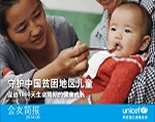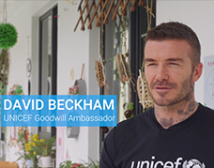MANILA/NEW YORK/COPENHAGEN, 10 November 2013– UNICEF is rushing emergency supplies to areas of the Philippines ravaged by Super Typhoon Haiyan on 8 November, as the latest estimates indicatethat up to 4 million children could now be affected by the disaster.

Strong winds blow through the central Philippine island of Masbate. Typhoon Haiyan, hit the Philippines on 8 November 2013, 4.30 am with sustained winds up to 315 kmh (195 mph)per hour. |
Therapeutic food for children, health kits, water and hygiene kits to support up to 3,000 families in the affected areas have already been mobilized from supplies available in the country, with distribution prioritized for the Tacloban area as soon as access is possible.
"We are rushing to get critical supplies to children who are bearing the brunt of this crisis,” said UNICEF Philippines Representative Tomoo Hozumi. “Reaching the worst affected areas is very difficult, with limited access due to the damage caused by the typhoon to infrastructure and communications. But we are working around the clock to find ways to get these supplies to children as quickly as conditions allow."
UNICEF's warehouse in Copenhagen is airlifting US$1.3 million worth of additional supplies for another 10,000 families, including those affected by the recent earthquake in Bohol. The shipments contain water purification tablets, soap, medical kits, tarpaulins, and micronutrient supplements.

Houses destroyed by typhoon Haiyan's powerful winds and a massive storm surge at Tacloban City, in the Visayas Region of the Philippines on November 9, 2013. Haiyan is considered to be it the world's most intense typhoon this year, and one of the most powerful ever to make landfall. |
Children who have escaped the terrible violence of Haiyan still need urgent assistance to survive the aftermath of the storm. Particular concerns include health, due to the impact of the typhoon on water supply and sanitation systems. Children also need safe and protected spaces to be able to play and resume studying while adults work to recover their homes and livelihoods.
"As we get a better picture of the impact of this devastating crisis, it is clear that even more children are affected than first thought," said Mr. Hozumi. "UNICEF is doing all it can to reach these children, as quickly as possible with critical supplies, to protect their health, safety and wellbeing in the difficult days ahead."
For all multi-media products, including b-roll and photo, please visit: http://weshare.unicef.org/mediaresources
About UNICEF in China:
UNICEF first assisted China between 1947 and 1951, providing emergency services, food and nutrition, health and hygiene training during and after the Civil War. In 1979 UNICEF officially commenced its cooperation with the Government of China to support child health and nutrition, good water and sanitation, quality basic education for all boys and girls, and the protection of children from violence, exploitation, and AIDS. UNICEF is on the ground in over 190 countries and territories to help children survive and thrive, from early childhood through adolescence.
For further information, please contact: Dale Rutstein, Chief of Communication, UNICEF China: +8613910973801, drutstein@unicef.org; or Liu Li, Communication Specialist, UNICEF China, +8613701066671, liliu@unicef.org






























